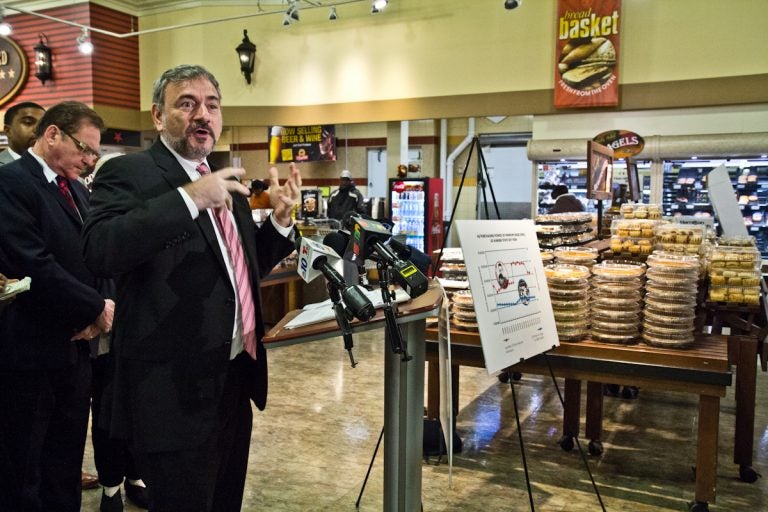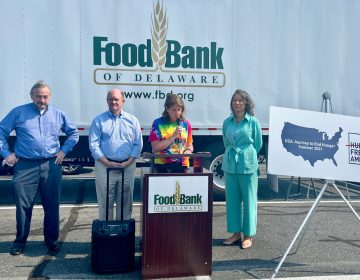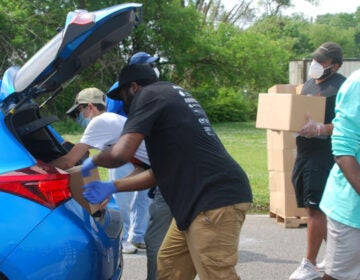Hunger widespread across U.S., particularly in Philly
Between 2014 and 2016, one in five Philadelphians were food insecure. That's about 300,000 people.

Joel Berg is the CEO of Hunger Free America. (Kimberly Paynter/WHYY)
Angela Sutton cannot wait to start her new job as a toll collector. Getting paid $20 an hour will make a big difference in her family’s life.
“This can mean I’ll be out of poverty,” said Sutton, who lives with her two children in Northeast Philadelphia.
Until then, covering bills, basic necessities, rent and food will continue to be difficult — the way it’s been for years.
“You find yourself trying to negotiate. My bill might be $125, but let me just put $50 on my electric bill to keep them quiet, so I can use the rest of this money to buy some food,” said Sutton.
Sutton has always worked, but there have always been moments during the year, usually when bills are due, that it’s hard to provide enough to eat, especially good things to eat. It’s what the federal government refers to as food insecurity.
“Sometimes there’s no versatility in it. You got to eat what you can afford,” said Sutton.
Between, 2011 and 2016, the number of people in Sutton’s situation – working adults living in food-insecure households – decreased slightly, according to a new report from Hunger Free America.
“It’s still far higher across America than before the start of the recession, which proves that there’s something that’s still fundamentally broken about our economy and social services sector,” said CEO Joel Berg.
The report, released Friday, evenly splits the six-year span and compares the two halves.
Federal data from the U.S. Census Bureau and the U.S. Department of Agriculture show that between 2014-2016, 13 percent of employed Americans are living in food-insecure households.
That translates to 15 million people.
Between 2011-2013, nearly 15 percent of working Americans lived in food-insecure households.
A related report, also released Friday by Hunger Free America, looks at food insecurity in Philadelphia, which remains the poorest big city in the country.
Between 2014 and 2016, one in five – more than 300,000 – Philadelphians were food insecure. That’s a roughly 5 percentage-point increase from the previous three years.
WHYY is your source for fact-based, in-depth journalism and information. As a nonprofit organization, we rely on financial support from readers like you. Please give today.





